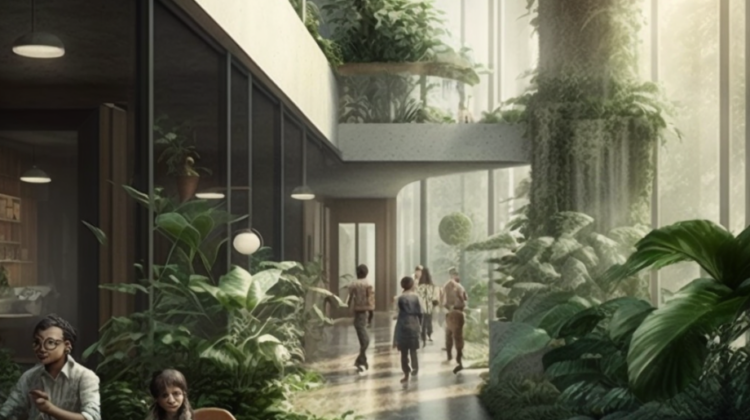
Biophilic design is an architectural concept that emphasizes the importance of nature in the design of living spaces. It is a concept that recognizes the innate connection between humans and nature, and seeks to create spaces that promote health and well-being by integrating natural elements into the built environment. Incorporating biophilic design into your home can have numerous benefits, from improving air quality to reducing stress levels and increasing productivity. In this article, we will explore some of the ways in which you can incorporate biophilic design into your home.
-
Incorporate natural light
One of the most effective ways to incorporate biophilic design into your home is to maximize natural light. Natural light not only helps to reduce energy consumption but also has a positive effect on mental health and well-being. Large windows, skylights, and light wells can all help to bring natural light into your home. You can also consider using light shelves or reflective surfaces to bounce natural light deeper into your home.
-
Use natural materials
Using natural materials is another effective way to incorporate biophilic design into your home. Materials such as wood, stone, and natural fibers help to create a sense of connection to nature and provide a sense of warmth and comfort. You can incorporate natural materials into your home through furniture, flooring, and decor items such as rugs and curtains.
-
Add plants
Plants are an essential element of biophilic design. They help to improve air quality, reduce stress levels, and increase productivity. You can add plants to your home by placing them on windowsills, shelves, or by creating a living wall. You can also consider using plants as a room divider or incorporating them into your furniture, such as a plant stand or a coffee table with a built-in planter.
-
Create a connection to the outdoors
Creating a connection to the outdoors is another important element of biophilic design. If you have a backyard or a balcony, consider adding outdoor seating or a dining area to encourage spending time outside. You can also consider adding a water feature, such as a small pond or fountain, to create a sense of tranquility and connection to nature.
-
Use natural colors
Using natural colors is another way to incorporate biophilic design into your home. Colors such as greens, blues, and browns are associated with nature and can help to create a calming and soothing environment. You can incorporate these colors into your home through paint, decor items, and furniture.
-
Incorporate natural patterns
Incorporating natural patterns is another way to incorporate biophilic design into your home. Patterns such as leaf prints, floral prints, and natural textures can help to create a sense of connection to nature. You can incorporate these patterns into your home through textiles such as pillows, blankets, and curtains.
-
Create a sensory experience
Creating a sensory experience is an essential element of biophilic design. You can create a sensory experience by incorporating elements such as sound, touch, and smell into your home. For example, you can incorporate a water feature to create the sound of running water or use natural scents such as lavender or eucalyptus to create a calming atmosphere.
In conclusion, incorporating biophilic design into your home can have numerous benefits, from improving air quality to reducing stress levels and increasing productivity. By incorporating natural elements such as natural light, natural materials, plants, and outdoor connections, you can create a space that promotes health and well-being. Additionally, by incorporating natural colors, patterns, and creating a sensory experience, you can create a calming and soothing environment that helps to promote relaxation and reduce stress.
